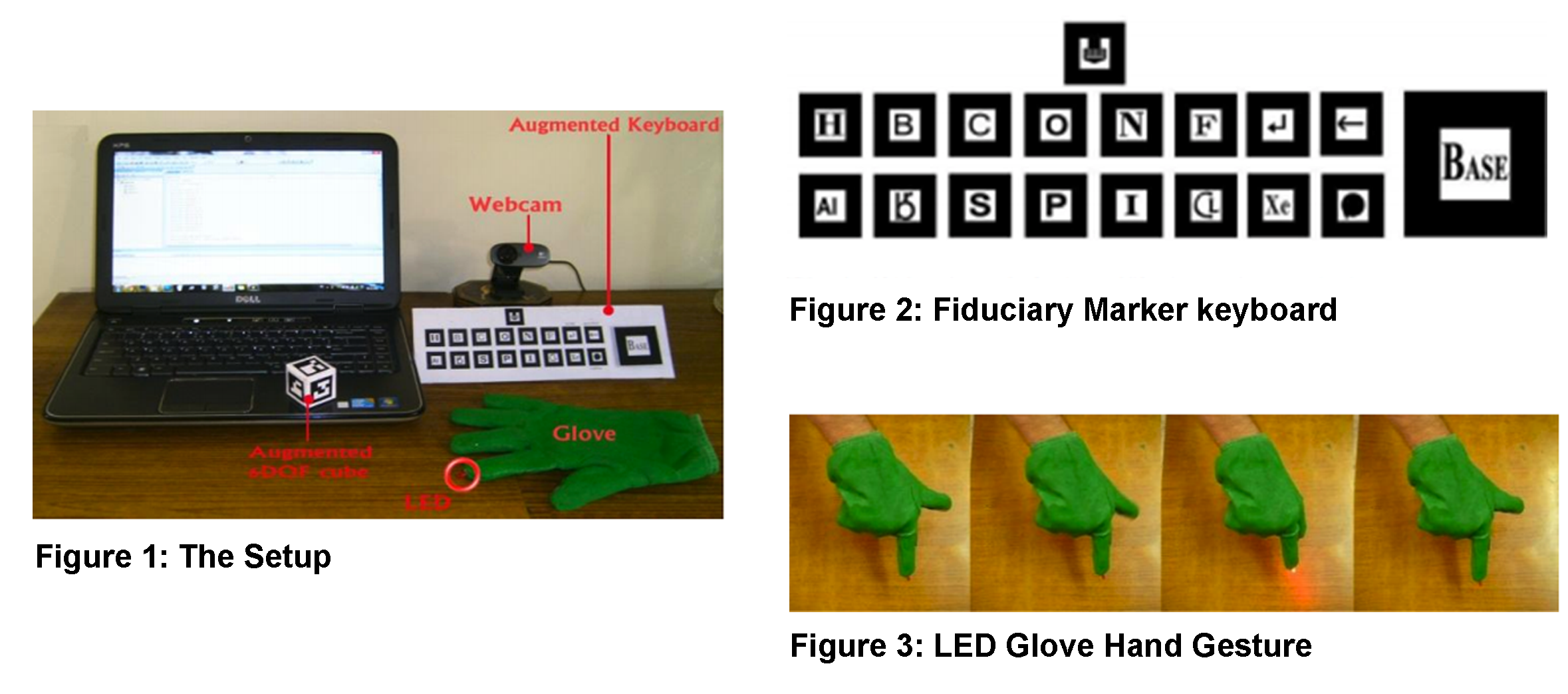Augmented Chemistry: Interactive Education System
Description
A Vision based application for students to learn chemistry by designing and interacting with the virtual 3D molecular models with the help of a Tangible user interface instead of learning in the 2D environment of textbooks. The System design requires the contribution from optics, mathematics, and molecular chemistry. Developed in C++ using OpenGL (Graphics), OpenCV (Image Processing) and ARToolKit.
Role
Ideator
Developer
Skills
AR Toolkit
OpenCV, C++
Collaborators
Sameer Bagga
Praroop Goyal
Dr. Vikas Saxena
Publications:
Samarth Singhal, Sameer Bagga, Praroop Goyal, and Vikas Saxena. 2012. Augmented Chemistry: Interactive Education System, International Journal of Computer Applications 49, 15 (July 2012), 1–5.
Samarth Singhal, Sameer Bagga, Praroop Goyal, and Vikas Saxena. 2012. Augmented Chemistry: Interactive Education System, International Journal of Computer Applications 49, 15 (July 2012), 1–5.
CHALLENGE
School teaching methodologies have evolved much over centuries. Recently, new technologies have appeared in the classroom. For example, it is common to see PowerPoint presentations and use networked platforms like Moodle [13]. Using these new technologies does not imply an increased interaction between students and the teachers. In fact, many times information keeps on flowing in just one direction, from the teachers to the students. For students to learn more and better, education has to be both experimental and interactive. We learn more from hands-on experiences than from traditional lectures. AR is mature enough to be applied to many everyday activities.We are interested in applying AR to Chemistry education at the school level. Specifically, letting them see different elements and their reactions with other elements in a 3D environment rather than their 2D textbooks.
PROCESS
RequirementsThe basic purpose of the project is to help increase the understanding of 3-D chemistry modeling and spatial arrangement of molecular structures in space. With the help of advanced AR technology (e.g. adding computer vision) the information about the surrounding real world becomes interactive and digitally tractable.
Development
In this project we want the students to intuitively build the molecular structures based on their chemical formulae, so we propose to use the AR technology for exhibiting the models. The layer of the model will be superimposed on a fiduciary marker. Apart from the rotation through the markers along the z-axis, a cube consisting of six markers is provided to rotate the 3D model along x, y and z-axes. For this, we will be using ARToolKit library (HTLab, 2007) which allows marker identification, position, and orientation calculation.

For the purpose of input, a keyboard of markers is designed which will help the user to effectively select the atoms to form the desired molecule as shown in figure 2.
The marker pattern in the keyboard has been designed to keep each key unique and distinguishable [17]. The user has to click on the requisite marker for the element to be added to the base marker. To register a click on the selected element we have defined a simple gesture using the thumb and forefinger as shown in figure 3.
This gesture completes the LED circuit and it glows at the tip of the forefinger. The element which the forefinger is pointing to is selected. The LED tip is detected by analyzing image for proper HSV color and getting the contour using OpenCV library, this is based on the Collision Detection and Direction finding.